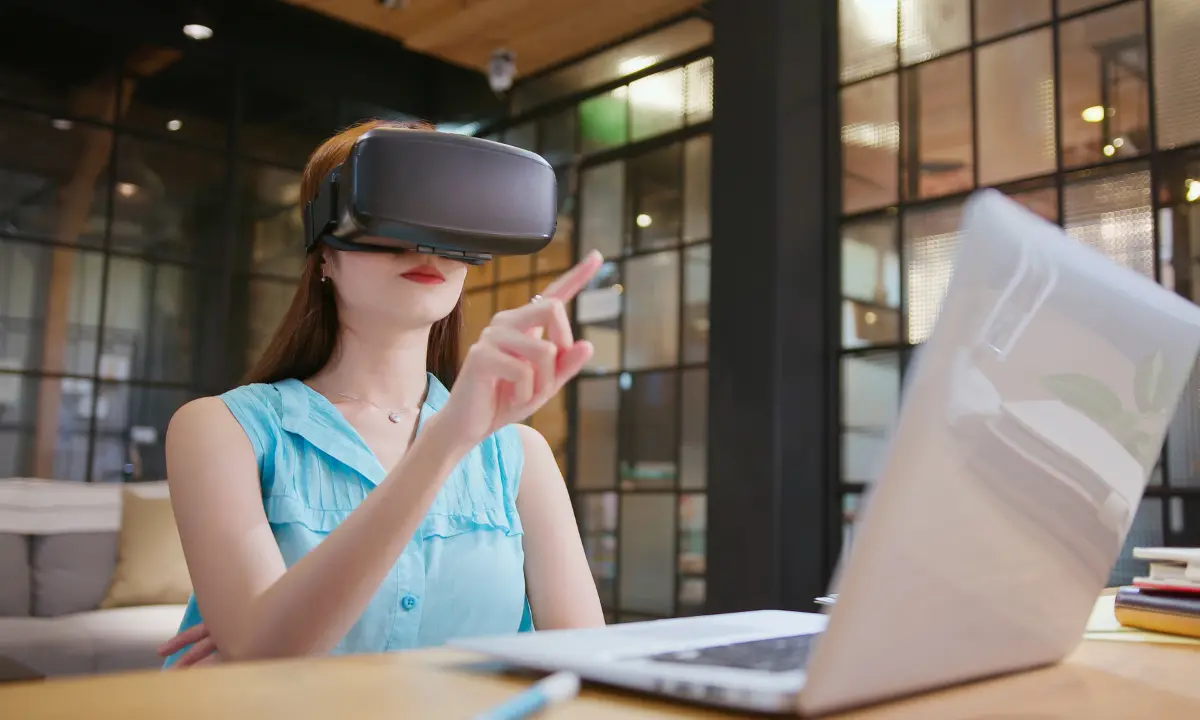Introduction
Advancements have opened new user experience opportunities up in augmented reality development. What is augmented reality is a big question today! One of the most well-known augmented reality examples of how the integrations have improved user experience is in Nike’s retail locations.
Nike introduced an augmented reality (AR) experience for customers across all of its retail locations to celebrate its 50th anniversary. However, there are several methods to incorporate AR into your company; eCommerce apps are not the only ones.
A successful strategy for improved conversion, augmented reality market trends are also continually altering the customer experience.
Top Augmented Reality Trends For Bettering Customer Experiences And Expanding Businesses
Human interaction is the lifeblood of every business! With intelligent talking assistants, AR applications can aid businesses in this area. Your firm can expand by using an AI-based assistant that simulates human connection and enables customers to engage in natural dialogue.
1. Make virtual friends for augmented reality
If you’ve ever heard of “Black Mirror,” a web series, there is a season 2 episode titled “Be right back.” It displays a science-fiction dream in which a smartphone-based AR AI companion resembles a loved one who has passed away!
Hybri is an AR-based AI program that performs the same function that Black Mirror did in 2013. As more individuals seek virtual friends, it will be one of the most important trends in augmented reality. Users of such an app will design an AI companion based on an AR that looks like actual people. In order to have natural conversations, it mimics real people.
2. Use augmented reality glasses for various purposes
Although VR/AR headsets have traditionally been preferred, AR glasses are currently a major trend. Giants like Apple are already working on developing a distinctive augmented reality (AR) experience for glasses that will launch in late 2025.
The wearable market’s increased demand has already elevated AR glasses to the status of one of the most important trends in augmented reality. With a CAGR of 13.37%, the market for AR/VR smart glasses is expected to reach $6.21 billion by 2026. Alphabet Inc., HTC, and Google’s parent firm are a few of the major companies in the industry.
3. Profit from the metaverse craze!
The modern AR movement known as Metaverse is completely changing user experiences. From eCommerce businesses to music labels, artists, and fashion houses, every business domain needs metaverses to engage audiences.
According to Forbes, the Metaverse is a hybrid of mixed reality and virtual reality. Users can use a browser or a headset to visit the metaverse. It is an AR movement that transforms how customers engage with goods from various businesses.
One of the digital behemoths aiming to rule the augmented reality experience is Microsoft. It is a fascinating case study because of their idea of combining cloud computing with competence in AR and VR.
4. Use mobile augmented reality apps for your company
Market trends for augmented reality vary depending on the platform. Mobile Augmented Reality is a trend that will continue to develop rapidly. By 2027, there will be over 7.690 billion smartphone users, according to Statista. Therefore, using immersive graphics created especially for smartphones, and mobile AR will help businesses target more people.
The image filter available in social media apps like Snapchat and Instagram is one of the best instances of mobile augmented reality. Because the AR image filter trend has been so successful, Snapchat is getting ready to include NFT (Non-fungible tokens) as filters in its mobile app.
5. Use AR to improve remote partnerships
The need for remote collaborations has spread to all corporate sectors. Companies in the industrial and healthcare industries use remote collaborations. Through computer-generated images, AR applications can facilitate remote collaborations by letting employees on-site view what remote collaborators are describing.
Experts can create virtual tools to help with critical reactions. AR-based remote collaborations can be used by manufacturing sectors that use complicated procedures in distant locations.
Cryogenic operations in oil refineries, where it is crucial to maintain temperature, are one excellent example. When on-site employees run into problems that require professional advice, AR can provide the reaction support.
6. Build engrossing augmented reality games
AR video games are already well-liked by gamers. Verified Market Research projects that the AR gaming sector will generate $31.7 billion in sales by 2028, expanding at a CAGR of 21.98%. The gaming industry is being driven by the interactive gameplay that augmented reality (AR) offers through the synchronization of visual material with the real-time user’s environment. Using augmented reality to create interactive entertainment for users, such as AR games like Pokemon GO and Egg, is one of the key developments in AR.
7. Create innovative augmented reality health apps
Digital technology has already been widely adopted in the healthcare sector to enhance the services provided by doctors. Everything has been digitalized, including telemedicine, virtual consultations, and remote healthcare services. But what AR offers is an immersive experience that helps healthcare service providers deliver their services more effectively.
These AR developments enable doctors to offer patients a holistic service and open doors to new healthcare use cases. Surgery errors are less likely, and with extreme precision, internal bleeding can be prevented.
8. Provide live broadcast shopping based on augmented reality.
The live-streaming retail experience is an AR innovation that is altering the shopping experience. It is a hybrid of an influencer- and an augmented reality-based e-commerce experience. Influencers on social media invite their fans to use an AR version of the product while they livestream it.
Such a strategy can assist businesses in enhancing the buying experience. Organizations can use AR, for instance, to let people experience their products first-hand without having to invest much in real samples.
In order to give your customers such a distinctive experience, your application must incorporate AR-based technology with live streaming functionality.
The Last Word: Reality!
What is real and what isn’t gets muddled by augmented reality! Even though you want to give your consumers a unique AR experience, you need solid solutions. The AR app development companies offer specialized services to meet your company’s needs.




